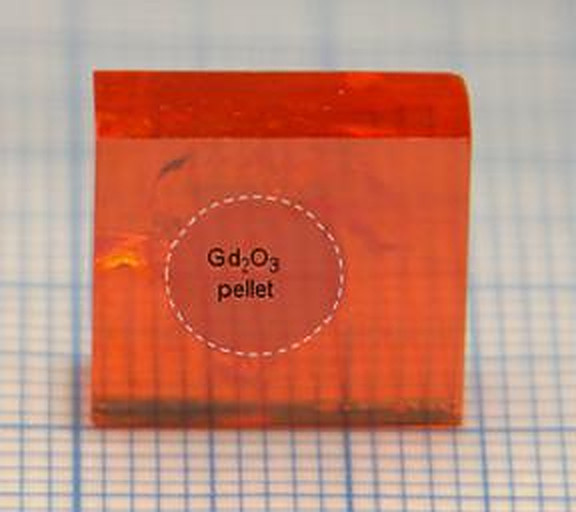Beyond their well-documented potential as a low-cost, high-efficiency photovoltaic cell material, the properties of various perovskite materials make them suitable for various devices, including light-emitting diodes, photo sensors, radiation detectors and plenty more besides.
Earlier research into the economics of manufacturing has shown that perovskite solar cells could benefit from the development of such devices, since they would allow for smaller-scale production, and for manufacturers to gain experience with the materials in an industrial setting, without the bigger investment needed for large-scale PV production.
Now, scientists led by the École polytechnique fédérale de Lausanne (EPFL) in Switzerland have found that perovskites can detect thermal neutrons, one of the hardest to detect particles emitted by radioactive materials. Working with methylammonium lead tri-bromide, the group found that neutrons hitting the perovskite produced a small current, and when combined with a foil of gadolinium metal and a carbon electrode, this could easily be measured.
Popular content
The device is described in the paper Hybrid halide perovskite neutron detectors, published in Scientific Reports. The group was able to grow perovskite crystals around the foil, demonstrating another flexibility in perovskite material that could make it interesting for yet more applications. “The property of this material is such that it can engulf anything, from a fly to a crocodile, to gadolinium,” says EPFL chemist Márton Kollár. “So it grows around the object, and even when it grows around, it stays crystalline. So this is a really fabulous feature of this material.”
Having demonstrated the usefulness of perovskites in neutron detecting, the group says it will now work to optimize the devices, varying the thickness and form of the connector try and increase the signal to noise ratio. “It’s simple, it’s cheap, and it’s cost-effective,” says László Forró, who led the research. “Now that the team has shown that the device works, the next step is refinement and potential commercialization. This is a proof of principle, that it works. And now we can think about configuration for a very efficient detector.”
This content is protected by copyright and may not be reused. If you want to cooperate with us and would like to reuse some of our content, please contact: editors@pv-magazine.com.



Awesome